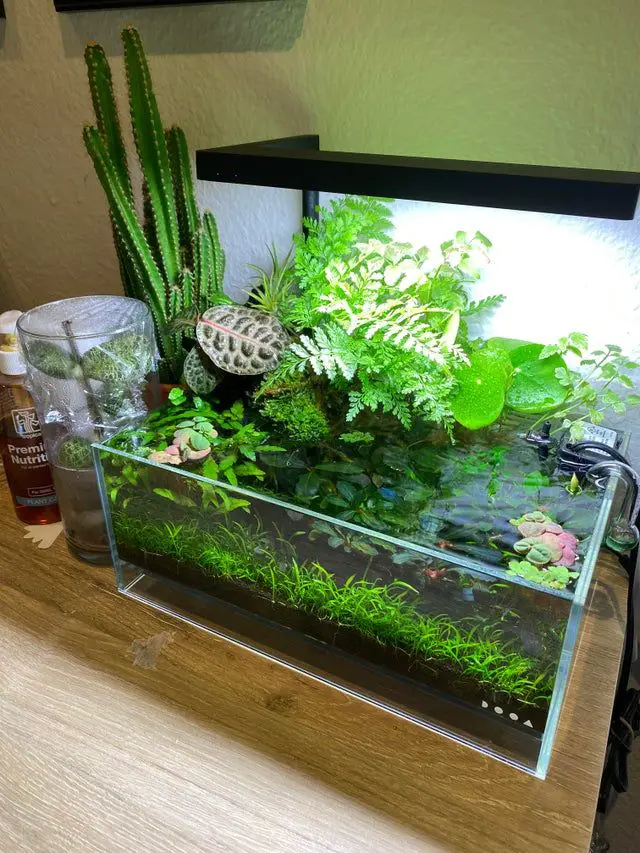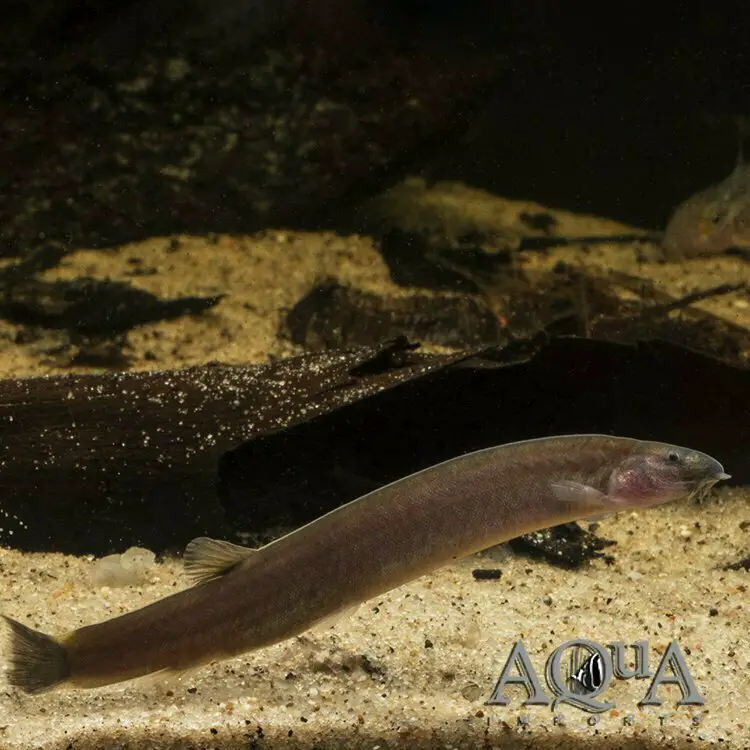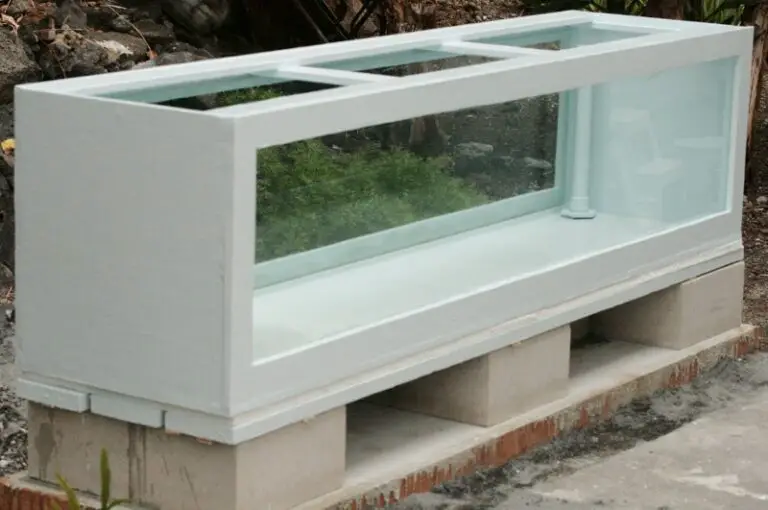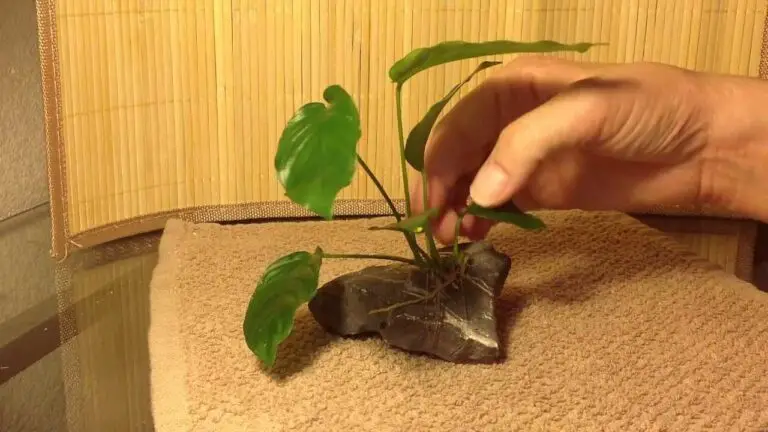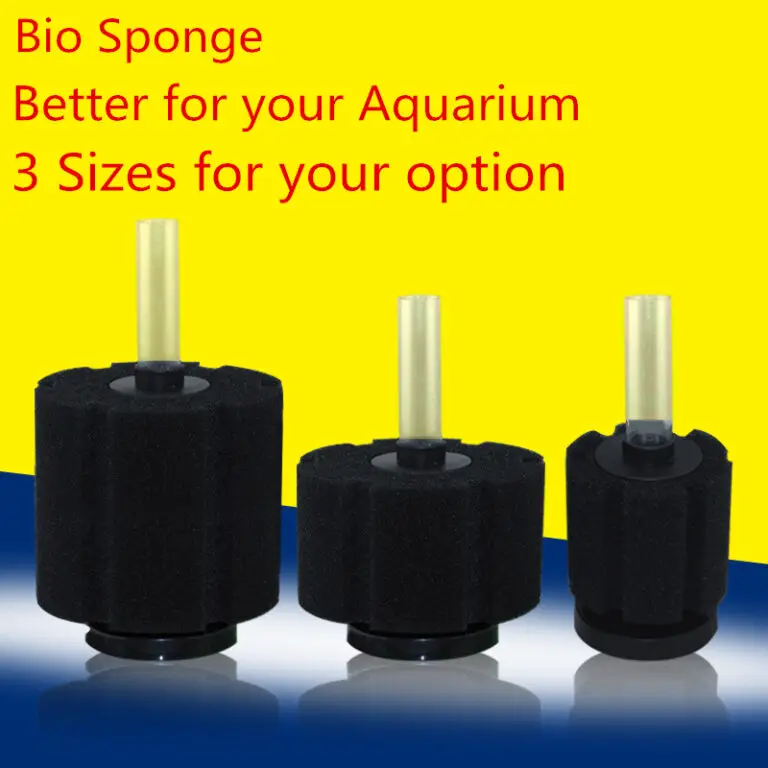Using Old Aquarium Water in New Tank
If you are new to the fishkeeping hobby, you may be wondering if you can use old aquarium water in your new tank.
The answer is yes! Using old aquarium water is a great way to jump start the nitrogen cycle in your new tank.
This will help to keep your fish safe and healthy. There are a few things to keep in mind when using old aquarium water.
If you have an old aquarium, you may be wondering if you can use the water in a new tank. Old aquarium water can be a great way to jump start your new tank.
Here are a few things to keep in mind when using old aquarium water:
1. Make sure the old aquarium was well maintained. If it was not, there could be harmful bacteria or other contaminants in the water that you don’t want in your new tank.
2. Test the old aquarium water before adding it to your new tank. This will help you determine if the water is safe for your fish and plants.
3. Only add a small amount of old aquarium water to your new tank at first.
This will help prevent any shocks to the system and give you time to adjust as needed.
Using Old Tank Water to Cycle
If you’ve got an old fish tank that’s been sitting around for a while, you may be wondering if you can use the water to cycle a new tank.
Using old tank water to cycle a new tank is a great way to get your new aquarium up and running quickly and with minimal effort.
Here’s how to do it:
1. Start by setting up your new tank and filling it with fresh water.
Then, add all of the necessary fish tanks decorations, plants, rocks, gravel, etc.
2. Next, take your old fishtank and pour out about ½ of the water into your new tank.
Be sure to do this slowly so as not to disturb the gravel or other decorations in your new aquarium.
3. Now, introduce any fish that you wish to house in your new aquarium to the old fish tank, along with a daily ration of ¼ cup of food.
Let the fish stay in the old tank for approximately two weeks to adjust to their new surroundings and start generating waste.
This waste will aid in initiating the cycling process in your new aquarium.
4. After two weeks, carefully move half of the water from your current fish tank to the new one.
Make sure to do this gradually to optimize the transfer of beneficial bacteria from your old habitat to the new one.
Refill the old fish tank with fresh water as needed to make up for the water lost during this transfer. Dispose of any leftover food.
How to Instantly Cycle a Fish Tank?
Introducing fish to a new tank can be a thrilling experience for any aquarium enthusiast.
However, it’s crucial to bear in mind that the cycling process of a new tank can span several weeks.
During this period, the levels of ammonia and nitrite in the water will fluctuate as the colonies of beneficial bacteria develop.
This can induce stress in your new fish, and in certain instances, it can be lethal.
The cycle process can be expedited by employing a technique known as “instant cycling.”
This method involves deliberately introducing ammonia into the tank to stimulate the proliferation of bacterial colonies.
It’s a fairly straightforward procedure that anyone can execute, and it’s significantly less stressful (and potentially harmful) for your fish.
Here’s how to do it:
1. Begin with a minimal quantity of ammonia – approximately 3 ppm. Ammonia can be purchased at most pet stores or online.
Ensure to use pure ammonia that doesn’t contain any additional surfactants or scents, as these could be detrimental to your fish.
2. Introduce this ammonia solution directly into your tank using a syringe or pipette. Ensure it’s evenly dispersed throughout the water column so that every part of the tank is exposed.
3. Examine the water daily using an aquarium test kit until you observe the emergence of nitrites (this typically occurs within 3-5 days).
Once this happens, you can cease the addition of ammonia as it’s no longer required – natural processes will assume control from this point and finalize the cycle.
4. When nitrites become detectable at levels of 0.5 ppm, it’s time to introduce your initial group of fish! We suggest beginning with a small number of robust species initially.
Once you’re confident that everything is proceeding smoothly, you can gradually add more sensitive fish in the future.
How to Transfer Betta from Old Tank to New Tank?
When you’re ready to move your betta to a new tank, there are a few things to keep in mind to make the transition as smooth as possible.
1. Begin by adjusting your betta to the new water temperature. Establish your new tank and let it reach the same temperature as the old tank prior to introducing your fish.
This can be achieved by letting a cup or bag of water from the old tank float in the new tank for a duration of 30 minutes.
2. Once the water temperatures are matched, it’s time to start slowly introducing your betta to the new water.
Add a small amount of new water (about 1 cup) to the old tank and mix it well.
Over the course of an hour, slowly add this mixture back into the new tank until all of it has been transferred.
3. Now that your betta is in its new home, there are a few things you’ll need to do to help it adjust.
First, don’t feed them for 24 hours after they’ve been moved.
This will help reduce any stress they may be feeling and give them time to adjust to their surroundings.
How to Cycle a Tank in 24 Hours?
If you’re in a hurry to get your new aquarium up and running, you can cycle it in just 24 hours!
Here’s how:
1. Start with a small fish load. Add no more than 2-3 fish per 10 gallons of water.
2. Feed the fish regularly, but only offer them as much food as they can eat in 2 minutes.
3. Change 25% of the water every day, using a gravel vacuum to remove waste from the bottom of the tank.
4. Test the water daily for ammonia and nitrite levels using an aquarium test kit.
When these levels start to rise, it means that the beneficial bacteria are starting to multiply and establish themselves in your filter media and gravel bed.
Keep up with the water changes until ammonia and nitrite levels peak, then level off or start to decline.
This usually takes 7-10 days. Once ammonia and nitrite levels are zero, your aquarium is fully cycled!
Transferring Fish to New Tank
Adding fish to a new tank can be a stressful experience for both the fish and the aquarium owner.
There are a few things that you can do to make the process as smooth as possible for everyone involved.
The first thing to do is acclimate your fish to the new water conditions.
This can be done by slowly adding small amounts of water from the new tank to their current one over a period of time.
You’ll also want to make sure that the temperature of the new water is close to that of their current environment.
Once your fish are acclimated, it’s time to start transferring them into their new home.
The best way to do this is by using a net or plastic baggie. Gently scoop up your fish and place them into their new tank.
If you’re using a net, try not to let them touch the sides or bottom as this could damage their delicate scales.
It’s important to give your fish time to adjust to their new surroundings before adding any more animals into the mix.
Give them a few days to explore and get used to their new home before introducing any new tanks mates.
How to Skip Cycling a Tank?
If you’ve ever set up a new fish tank, you know the drill: fill ‘er up, add some dechlorinator, and then let the tank “cycle” for a few weeks before adding any fish.
The cycling process is essential to keeping your fish healthy, as it allows beneficial bacteria to grow in the tank and break down ammonia produced by the fish. But what if you just don’t have the time to wait for your tank to cycle?
Maybe you’re moving and can’t take your fish with you, so you need to set up a new tank ASAP.
Or maybe you’ve inherited a fish from a friend who can no longer care for it. In these cases, skipping the cycling process may be your only option.
Fortunately, there are a few ways to do this without harming your fish. One method is to buy a “biofilter” from your local pet store or online.
This filter will house beneficial bacteria that will help break down ammonia in your tank.
An alternative approach is to incorporate live plants into your tank; numerous plants anchor themselves in gravel and serve as organic filters.
You could request someone with a well-established aquarium to lend you some of their gravel or filter media (like activated carbon) to expedite the cycling process in your own tank.
Regardless of the method you opt for, it’s crucial to vigilantly track the ammonia levels in your tank using test strips, which are readily available at most pet stores.
If ammonia levels get too high, it can be deadly for your fish!
How Long Should I Wait to Transfer My Fish to a New Tank?
When you’ve had your fish for a while, you might start to think about transferring them to a new tank. But how long should you wait before making the move?
There are a few things to consider before transferring your fish to a new tank.
First, make sure the new tank is properly set up and cycled.
This means that it has been filled with water and allowed to sit for a week or two so that the levels of ammonia and nitrites can stabilize.
Once the new tank is ready, it’s time to acclimate your fish to their new home.
Start by slowly adding some of the water from the new tank into their current one, over the course of an hour or so.
Then, transfer them to the new tank and let them adjust for a few days before feedings. If all goes well, your fish will be happy and healthy in their new digs in no time!
How to Grow Beneficial Bacteria in Aquarium?
If you want a healthy aquarium, it’s important to grow beneficial bacteria. These bacteria help break down fish waste and keep the water clean.
There are a few things you can do to encourage the growth of beneficial bacteria in your aquarium.
First, add a filter to your aquarium. Filters provide surfaces for bacteria to colonize. You can also add live plants to your aquarium.
Plants provide hiding places for fish and also help filter the water. Another way to encourage the growth of beneficial bacteria is to feed your fish high-quality food.
Good food means less waste, which helps keep the water clean and promotes the growth of beneficial bacteria.
Finally, don’t overclean your aquarium! Every time you remove something from the tank, you’re also removing helpful bacteria.
A little bit of algae is actually good for an aquarium because it provides food for grazing fish and helps promote the growth of beneficial bacteria.
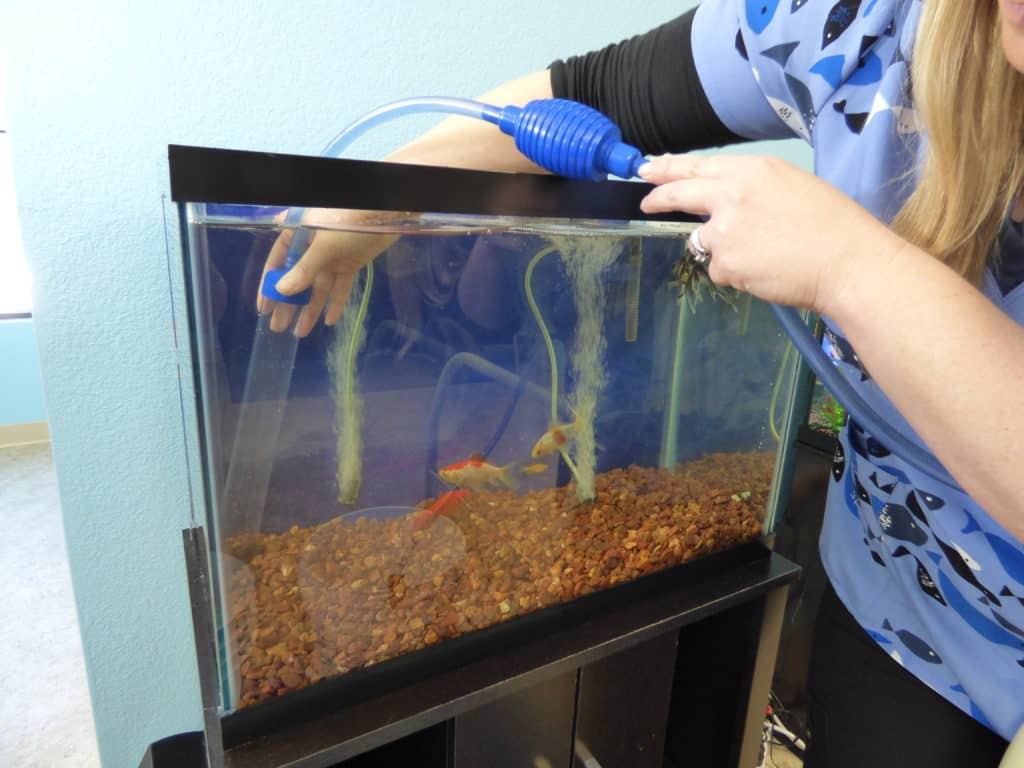
Credit: cafishvet.com
Can I Reuse Old Aquarium Water?
You can absolutely reuse old aquarium water! In fact, reusing old aquarium water is a great way to help keep your tank clean and reduce your water bill.
Here are a few tips on how to do it:
1. First, you’ll need to remove any debris from the old water. This includes fish waste, uneaten food, and other organic matter. The best way to do this is with a gravel vacuum or siphon.
2. Next, you’ll need to replace any evaporated water. To do this, simply add dechlorinated tap water to the tank until it reaches the desired level.
3. Finally, you’ll need to add some fresh plants or decorations to the tank. This will help oxygenate the water and make it more hospitable for your fish.
How Long Does It Take to Cycle a Tank With Old Water?
The duration it takes to cycle a tank depends on several factors, including the size of your tank, the volume of old water you’re attempting to cycle, and the water’s temperature.
Generally, it takes longer to cycle a tank with old water compared to new water.
This is because old water already has some ammonia and nitrites, which can prolong the cycling process.
If you’re cycling a tank with old water, patience is key. The process might take a few weeks or even months to complete.
During this period, it’s crucial to closely monitor your water quality and make any necessary modifications to ensure the health and happiness of your fish.
What Happens If I Don’T Change My Aquarium Water?
If you don’t change your aquarium water, the water will become increasingly polluted with toxins and waste.
These pollutants can build up to harmful levels and eventually kill your fish.
Algae and other aquatic plants can take over the tank, making it difficult to maintain proper oxygen levels for your fish.
How Do I Transfer My Fish from Old Tank to New Tank?
If you’re transitioning your fish to a new tank, there are several steps to ensure a smooth and stress-free shift for your fish.
First, acclimatize your fish to the new water conditions.
This involves gradually introducing water from the new tank to the old one over an hour or so until the water in both tanks is identical.
This will assist your fish in adapting to any changes in pH or temperature between the two tanks. Once the water is balanced, it’s time to begin moving your fish.
The optimal method is to use a net – gently scoop up each fish individually and carefully place them in their new environment.
If you have plants or other decorations in your old tank that you wish to relocate as well, now is the time to do so.
Be mindful not to disturb too much of the gravel or substrate as this can release toxins into the water, potentially harming your fish.
Finally, once all your fish are safely in their new tank, top off the water level and incorporate any filtration or aeration that was in the old tank.
Activate all equipment and let it operate for a few hours before introducing any additional inhabitants (like snails or shrimp) to ensure everything is functioning correctly.
With a bit of care and patience, transitioning your fish from one tank to another can be a straightforward and stress-free process – for both you and your fish.
Conclusion
If you’re establishing a new aquarium, you can expedite the cycling process by using water from your existing aquarium.
This involves removing the fish from your old tank, draining its water into a clean bucket, filling your new tank with fresh water, and then adding the old aquarium water.
Once you reintroduce your fish to the new aquarium, it’s crucial to monitor the ammonia and nitrite levels closely over the next few weeks.
This method ensures a smooth transition for your fish and sets up your new aquarium for success.
